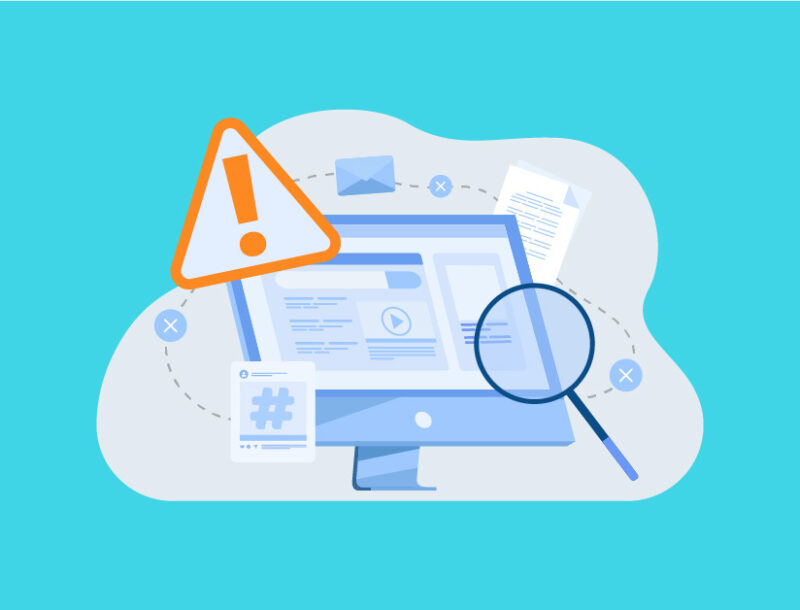Tech Innovation & The Solve for Financial Institutions During A Crisis

The COVID19 pandemic has upended nearly every aspect of life, including how companies interact with their customers, and how customers choose and interact with products and services.
Five months into the pandemic in the U.S, we’re starting to see data that shows just how much the pandemic is affecting businesses. A recent McKinsey survey of over 200 organizations across industries found that over 90% of executives said they expect the fallout from COVID-19 to fundamentally change the way they do business over the next five years, with almost as many asserting that the crisis will have a lasting impact on their customers’ needs. However, more than three-quarters also agreed that the crisis will create significant new opportunities for growth.
In a recent webinar, PerformLine’s John Zanzarella was joined by industry experts Kayvan Alikhani, Yasmin Omrani, and Karin Lockovitch where they shared insights on the compliance space and how new technologies continue to push organizations to adapt to their compliance practices to ensure that lines of defense work together to meet regulatory and consumer protection obligations-all while demands grow and budgets shrink. Here are some key takeaways from the discussion.
Increased Need for Technology
There has been a rapid increase in acceptance and dependence on new technologies throughout the financial services industry over the past few years, which has been accelerated by the pandemic.
It’s a really interesting time of change, and I think the pandemic has absolutely accelerated that change industry-wide.
—Karin Lockovitch, EVP and Chief Compliance Officer, ELA Risk Solutions
As many financial institutions were forced to quickly pivot to working remotely, they were also forced to adopt new technologies to help support their remote employees and their regulatory compliance efforts-all of which led to innovation in technology and opportunity for growth.
A productive byproduct of the pandemic is that more organizations are better understanding their need for tech (during times of crisis and beyond). They’re also making decisions to implement these solutions much faster than before, allowing them to operate in a more flexible, efficient, and tech-dependent way. This rapid change and innovation is continuing to put pressure on compliance and risk professionals to keep up and adapt.
Another factor that’s contributing to this widespread acceptance of tech, pandemic or not, is the need for operational data within compliance programs. Specifically, the Department of Justice (DOJ) recently issued new guidance that emphasizes the importance of using an information and reporting system to provide the managers and leadership with timely and accurate data to make appropriate evaluations of the organization’s compliance with the law.
We’ve been catering to data for a while now and we’ve been able to show our clients how data can help better inform risk and revenue decisions. Harnessing compliance data can unlock early warnings and act as a monitoring system for risks.
—John Zanzarella, VP of Sales, PerformLine
Organizations are turning to new technologies to help them gather and analyze their data in accordance with this new guidance.
The Evolving Regulatory Landscape During COVID-19
When you look at the high pace and volume of the regulatory path in the past 7 or 8 years, you’ve seen an over 100% uptick in terms of rules, regulations, enforcement actions, and everything in between.
—Kayvan Alikhani, Co-Founder and CEO, Compliance.ai
The ever-changing regulatory landscape poses a significant compliance burden for those in the financial services, banking insurance, and others alike-and even more so now with the impact of COVID-19.
According to Compliance.ai, there have been over 2,700 COVID-related regulatory updates since March 2020 in the U.S. and U.K. alone from both federal and state levels-and this number keeps growing. This number doesn’t even include international regulations, or the 9,000+ guidances that were published in the form of white papers, thought leadership articles, advisory content, column news, and other media channels.
On top of the increasing number of new regulatory updates and guidances, the implications of these regulations often differ across federal, state, and independent agencies.
This type of volume and complexity warrants looking at a different approach to addressing regulatory change management. That’s where tech solutions come into the picture, with the ability to provide agile and cost-effective solutions that make it significantly easier to monitor and react to these rapid regulatory changes that are happening at scale.
Changing Demands for Tech Solutions During a Crisis
It’s no longer reasonable to assume that an organization with a small-scale compliance team can know about and process thousands of regulatory documents per month, says Kayvan. Manual compliance change management is no longer viable, and technology is critical for organizations to manage the ever-changing and complex regulatory landscape.
There are a few ways that the demand for compliance technology has changed in recent months, according to Compliance.ai and what they’ve seen with their customer base:
- Keeping up with the times: Many organizations are looking for a centralized view of regulatory updates and for tech to help then establish a consistent set of processes to help them track, monitor, and report on these changes in anticipation of the next disruption.
- Reducing the noise: People want to stay in the know-but only for what’s relevant to them. They need technology to cater specifically to their needs and to exclude unnecessary information.
- Interoperability: As many institutions are growing and moving into new verticals, they need their tech solution to grow with them and adapt to their needs. They prefer to stick with what they already have, instead of going out and trying to find another tech to fulfill their needs.
- Ease of use: Organizations are looking for quick onboarding and ease-of-use. They want to get up and running quickly and with minimal help needed from IT teams.
Choosing the Right Tech For Your Business
The first step in choosing your partners, according to Yasmin, is to identify the business challenges or opportunities that your organization is facing so you can better understand your technology needs. This process should be consistent across the board, whether it’s for client-facing services, operations, infrastructure units, or anything else.
Although most of our work is demand-driven, we have to ensure that the technologies we work with and the challenges we’re addressing align with strategic priorities of each business area.
—Yasmin Omrani, Regulatory, Compliance, and AFC Innovation Lead, Deutsche Bank
Another factor to consider when choosing a new tech is if the solution is aligned with the big picture of how you want your organization’s infrastructure and tech stack to look like-do you want disparate, targeted solutions for individual problems, a platform solution, or something else?
Ultimately, the decision should boil down to whether the technology can do the job efficiently, if it’s safe for the organization, and if it can be implemented and onboarded fairly easily.
Buy vs. Build?
Especially for larger institutions, it’s a common question of whether to buy an outside solution or to build their own. When it comes to this, organizations should consider what would be more feasible. What is the issue you’re looking to solve for? Is there a regulatory timeline that you need to meet? Does it make sense to build it out, or is it more efficient to introduce new outsourced technology?
Ultimately, the decision comes down to what will be most beneficial for the organization as a whole.
For more in-depth information on these topics and more, catch up on the virtual discussion on-demand here. For more expert insights on today’s most pressing topics, subscribe here and be the first to be notified of all our upcoming virtual events.



